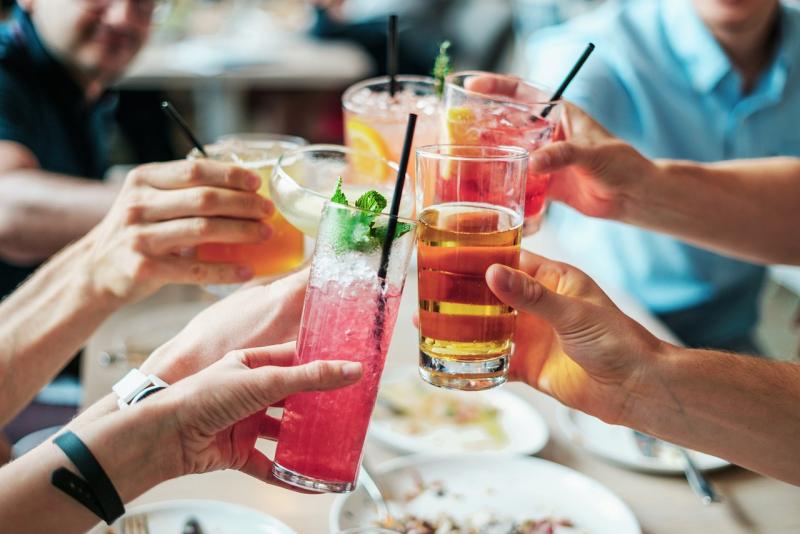Gatherings and celebrations have been an integral part of human culture for centuries, dating back to ancient times. The history of parties can be traced back to various civilizations and cultures around the world, each with its own unique traditions and customs.
One of the earliest recorded celebratory gatherings can be found in ancient Egypt, where festivals were held to honor the gods and mark important events such as harvests and the changing of seasons. These gatherings often involved feasting, music, and dancing, creating a sense of community and unity among the people.
In ancient Greece, parties were a common way to celebrate weddings, victories in battle, and religious holidays. These gatherings often included elaborate feasts, drinking, and entertainment such as plays and musical performances. The Greeks believed that parties were a way to honor the gods and bring good fortune to their community.
Throughout history, parties have continued to evolve, taking on new meanings and forms in different cultures and societies. From the grand celebrations of the Roman Empire to the elaborate balls of the Victorian era, the history of parties is a fascinating tapestry of traditions, rituals, and social gatherings that have brought people together for centuries.
The Evolution of Social Festivities
Social festivities have been a crucial aspect of human culture for centuries. The history of parties can be traced back to ancient civilizations, where gatherings were held to celebrate special occasions, religious events, or simply to socialize with friends and family. These early parties often involved feasting, music, dancing, and games, providing a sense of community and connection among participants.
As societies evolved, so did the nature of social festivities. In the Middle Ages, elaborate feasts and banquets were common among the nobility and upper classes, showcasing wealth and power. These events were often highly structured and formal, with strict rules of etiquette and elaborate entertainment to impress guests. However, in contrast, peasants and common folk also held their own celebrations, such as harvest festivals and village fairs, which were more informal and inclusive.
The Renaissance period saw a shift towards more refined and elegant parties, with a focus on art, music, and intellectual conversation. The emergence of the coffeehouse culture in Europe also played a significant role in shaping social gatherings, providing a space for people from all walks of life to come together and exchange ideas. As time progressed, parties became more diverse and inclusive, incorporating elements from different cultures and traditions to create a truly global celebration of human connection and camaraderie.
Global Traditions in Party Culture
Parties have been an essential part of human socializing for centuries, with each culture bringing its unique traditions and customs to the table. From extravagant celebrations to intimate gatherings, the history of parties is filled with interesting anecdotes and fascinating insights into the human need for connection and camaraderie.
In Mexico, the tradition of throwing quinceañeras dates back to the Aztec era, where young girls were celebrated as they transitioned into womanhood. These elaborate parties often include traditional music, colorful decorations, and delicious food. Similarly, in India, weddings are not just a union of two individuals but a grand celebration that lasts for days, filled with music, dancing, and lavish feasts.
In Japan, the annual cherry blossom viewing parties, known as Hanami, are a time-honored tradition that celebrates the beauty of nature and the fleeting nature of life. Families and friends gather under the blooming cherry blossoms to enjoy food, drinks, and the company of loved ones. This tradition highlights the Japanese value of mindfulness and appreciation for the present moment.
Across the globe, people come together to celebrate life's milestones, cultural heritage, and simple joys through the universal language of parties. Whether it's a birthday bash, a festive carnival, or a solemn religious ceremony, the history of parties reflects the rich tapestry of human experiences and the timeless need for communities to come together in joy and celebration.
Influence of Technology on Modern Celebrations
One of the most significant ways technology has impacted modern celebrations is through the use of party planning apps. These apps allow hosts to easily organize every aspect of their event, from guest lists to seating arrangements to music playlists. With just a few taps on their smartphones, party planners can ensure that every detail is taken care of, resulting in a seamless and stress-free experience for both them and their guests.
Furthermore, the rise of photo-sharing and live streaming platforms has revolutionized the way we document and share our party memories. Instead of relying on disposable cameras or waiting weeks for photos to be developed, partygoers can instantly capture and share their favorite moments in real-time. This instant gratification has not only enhanced the overall party experience but has also allowed for a more interactive and engaging celebration. As we delve deeper into the fascinating history of parties, it's clear that technology will continue to play a pivotal role in shaping the future of celebrations.



